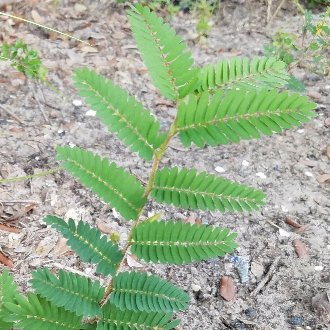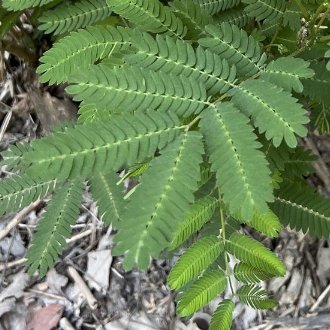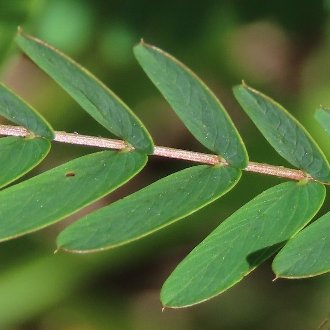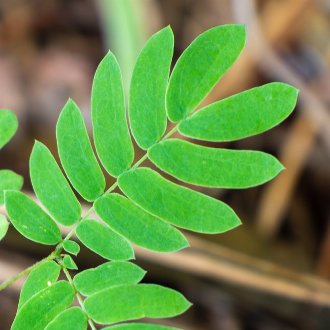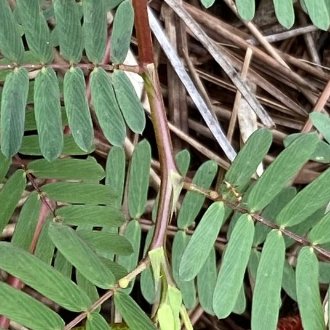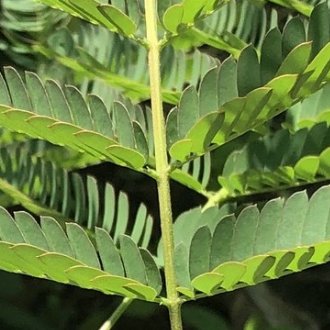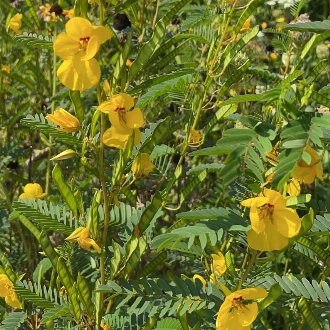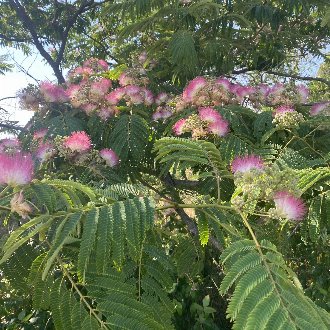Partridge Pea vs Persian Silktree
These two nitrogen-fixing legumes are frequently confused as seedlings. Both have compound leaves with leaflets of similar size and shape, and both are earlier colonizers of sunny, disturbed habitats. The robust, often reddish-colored stalk of partridge pea can lead it to be confused with a woody plant. Mature plants are wildly dissimilar, and young plants are easily distinguished by close examination of leaf structure.
Partridge Pea (Chamaecrista fasciculata) | Persian Silktree (Albizia julibrissin) |
A showy, nitrogen-fixing annual of sunny, average to dry habitats, native to central to eastern North America. | A small nitrogen-fixing tree native to the warmer parts of Asia. and planted as an ornamental in the US, where it has become invasive. |
Leaves are singly-compound, attached alternately along the stem. Photo © Leila Dasher, CC BY 4.0. | Leaves are doubly-compound, with sets of leaflets arranged oppositely along the rachis (central stem of each leaf.) Photo © Nathan Aaron, CC BY 4.0. |
Leaflets have more pronounced, sharp points at their tips. Tips point outward, more perpendicular to the leaf's central axis. Photo © Theo Rickert, CC BY 4.0. | Leaflets have slightly more subtle points at their tips. Tips angle forward more towards the front of each grouping of leaflets. Photo © Derrick Wales, CC BY 4.0. |
Stipules (narrow, leaflike structure) are present where leaves meet the stem. Stems often zig-zag slightly between leaves. Photo © Karen Guin, CC BY 4.0. | No stipules are present along the rachis where the first set of leaflets meets it, because it is not a true stem. Rachis is straight. Photo © Andrew Conboy, CC BY 4.0. |
Herbaceous annual with bold yellow flowers, growing at most a few feet tall. Flowers in its first year, makes seeds, and dies. Does not grow woody parts or any persistent parts. Photo © Julia Szilvas, CC BY 4.0. | Woody plant. Matures into a tree with large, wispy, pink flowers. First-year plants do not flower. Photo © eml23, CC BY 4.0. |
References & External Resources
These short lists show only links helpful for ID. For a complete list of references and resources also covering other aspects of ecology, visit the links section of the full article on each plant, which is the first entry here.



